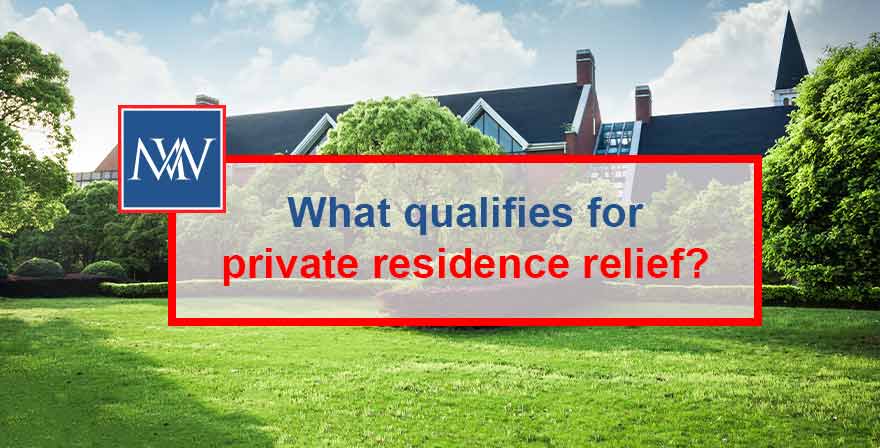
What qualifies for private residence relief?
Private residence relief is a well-known relief but one which is often misunderstood. It applies to remove the liability to capital gains tax that would otherwise apply where a homeowner makes a gain on the disposal of their only or main residence.
Like all reliefs, it is dependent on the associated conditions being met. Further, the fact that a property is lived in as a home prior to disposal does not in itself mean the gain will be exempt in full.
Scope of the relief
Private residence relief applies to the gain accruing to an individual which is attributable to the sale of all or part of a ‘dwelling house’ which is or has been during the individual’s period of occupation his or her only or main residence and also any land which the individual has for their own occupation and enjoyment with that residence as it garden or grounds up to the permitted area.
What is a ‘dwelling house’
The term ‘dwelling house’ is simply the building in which the individual lives. This may be a house, a flat or a bungalow. Alternatively, it may comprise a caravan or a boat if this is where the individual resides.
Land and gardens
Private residence relief also extends to land and gardens that are enjoyed with the home. The legislation caps this at an area of 0.5 of an hectare (the ‘permitted area’). However, a larger area may fall within the exemption where this is considered reasonable with regard to the size and character of the property, although the exemption will not cover land in use for other purposes, such as agriculture or use in a trade. By contrast, land used as a paddock or an orchard may form part of the grounds if there is no significant business use.
The land must be sold with the property or before it – if the land is sold separately after the sale of the residence, the relief will not apply.
Only or main residence
The relief applies to the only or main residence. Where a person has more than one property, they can elect which one is their main residence for the purpose of the relief. However, only properties that are lived in as a residence can be a main residence. An election to specify a property as a main residence must be made within two years of the date on which the latest residence is acquired. In the absence of an election, it is a question of fact as to which is the main residence.
Married couples and civil partners
Married couples and civil partners only have one main residence for capital gains tax purposes between them.
Final period exemption
Where a property has at some time been an individual’s only or main residence, the last nine months of ownership are covered by the relief, regardless of whether the property is occupied as an individual’s main residence at that time. Where a person sells their home to go into care, the final period of exemption is 36 months.
Full relief
If a property has been occupied as an individual’s only or main residence for the full period for which the individual has owned the property, the relief applies to the full gain made on disposal, so no chargeable gain arises.
Partial relief
If the property has been an individual’s only or main residence for some but not all the time that they have owned it, partial relief is available. The gain is time apportioned and the relief applies to the period for which the property is occupied as an only or main residence, plus the last nine months. Any remaining gain is liable to capital gains tax to the extent not sheltered by losses or the annual exempt amount.
For more information, Book a Free Consultation
Need Accountancy Support?
For information on bespoke training, or if you have any other questions for Makesworth Accountant, please fill in your details below




















 150
150